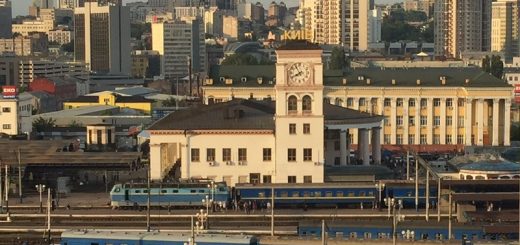Riding the Malaxa Railcar: Romania’s 80-Year-Old Train
One of the most unusual trains I’ve travelled on in Europe is the Malaxa railcar, a Romanian train over 80 years old that still runs on the railway tracks today.
Riding on a Malaxa railcar
I encountered the Malaxa railcar while travelling between Brad and Arad as part of #AllTheLinesEurope, where I aim to travel on every railway line in Europe with scheduled passenger services.
These railcars are named after Nicolae Malaxa, a Romanian engineer and industrialist (1884–1965), who founded his own railway rolling stock factory in 1921.
The Malaxa factory produced several types of locomotives, coaches, and railcars, including the Series 78 railcar, which I was travelling on between Brad and Arad.
Produced between 1940–1944 and 1949–1953, these trains featured either a Ganz or Maybach diesel engine with 250 horsepower, allowing a top speed of 110 kilometres per hour (68 mph).
Malaxa railcar arrives at the railway station of Brad. ©AndyBTravels
Malaxa operations
In the 1940s, these trains were ubiquitous in Romania and offered good comfort, even featuring an on-board lounge with a bar for first-class passengers.
Today, these trains are much rarer, and the Series 78 railcars were actually withdrawn from active service after one of them caught fire in 2023 when driving into the station of Oradea Vest.
That said, CFR, the Romanian Railways, have occasionally put them back on the tracks for special occasions and as temporary measure to compensate for shortages of modern DMUs.
The even older Malaxa Class 77 railcars (built between 1935 and 1942) are however still in use on some railway lines in Romania!

Malaxa Series 78-1000. ©AndyBTravels

Seats on a Malaxa Series 78-1000 railcar. ©AndyBTravels
On board the train
The Malaxa railcar I was travelling on was a 78-1000 Series to be precise, the double version of the standard 78 Series railcar.
What you encounter on board these Malaxa railcars is a far cry from the comfort of decades ago, as the comfortable armchairs once found on these trains have long been replaced by uncomfortable plastic chairs.
Indeed, this particular Malaxa railcar had certainly been poorly maintained, as from the outside it looked more like a piece of scrap metal than a train, with the graffiti on it making it look even worse.
The ride quality is rather atrocious and enormously bumpy, and the Malaxa railcar doesn’t even come close to reaching its top speed of 110 kilometres per hour due to the neglected, poor-quality infrastructure on Romania’s secondary railway lines.
In the videos below, you can take a look at how the Malaxa Series 78-1000 railcar looks on board, including one of the driving cabs.
Malaxa railcar walkthrough. ©AndyBTravels
A look around the driver’s cab of a Malaxa railcar. ©AndyBTravels
Toilets
The toilets on board the Malaxa railcar were some of the most basic and disgusting I’ve seen
There was no toilet seat, no toilet paper, no running water in the sink, and no soap, making it perhaps the worst aspect of the train.
I’ve written before about the importance of clean and well-equipped train toilets — an often overlooked factor — and although the standards on Romanian trains are average at best, this train toilet was clearly off-putting and one of the worst I’ve encountered on the European railway tracks.

Toilet on the Malaxa Series 78-1000. ©AndyBTravels
Conclusion
When travelling extensively around Europe by train, you sometimes come across historic rolling stock, and the Malaxa Series 78-1000, which is around 80 years old, is clearly one such train.
It’s highly interesting to see such an ancient piece of railway history still active on the tracks, and with a bit of an adventurous spirit, it’s also great fun to ride.
However, the conditions on board often leave much to be desired, as was the case on this Malaxa train, with its poor ride quality, uncomfortable seats, and disgusting toilet.





